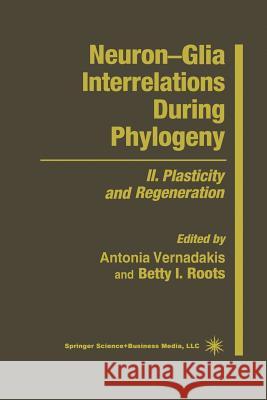Neuron--Glia Interrelations During Phylogeny: II. Plasticity and Regeneration » książka
Neuron--Glia Interrelations During Phylogeny: II. Plasticity and Regeneration
ISBN-13: 9781475759648 / Angielski / Miękka / 2013 / 516 str.
Neuron--Glia Interrelations During Phylogeny: II. Plasticity and Regeneration
ISBN-13: 9781475759648 / Angielski / Miękka / 2013 / 516 str.
(netto: 766,76 VAT: 5%)
Najniższa cena z 30 dni: 771,08
ok. 22 dni roboczych
Bez gwarancji dostawy przed świętami
Darmowa dostawa!
It has been established that neuroglia are involved in early neu- ronal growth, differentiation, and migration; these issues are well discussed in the companion volume entitled Neuron-Glia Interrela- tions During Phylogeny: I. Phylogeny and Ontogeny of Glial Cells. The present volume, Neuron-Glia Interrelations During Phylogeny: II. Plas- ticity and Regeneration, focuses on two aspects: (1) neuron-glia inter- relations as they relate to the physiological and metabolic homeostasis of neurons; and (2) the role of neuroglia and neuronal plasticity in regeneration and aging. Neuron-Glia Interrelations During Phylogeny: II. Plasticity and Regeneration begins with the unique presentation, "Neuron-Glia In- teractions in the Human Fetal Brain," by Sogos et al. The interesting issue discussed in this chapter is the immunocompetence of the CNS, a field that is now rising. The chapter by Oland et al., "Glial Cells Playa Key Role in the Construction of Insect Olfactory Glomeruli," discusses a unique role of glial cells as intermediates in afferent- axon induction of substructure with the CNS. The chapter by Vanhems, "Insect Glial Cells and Their Relationships with Neurons," compliments the information presented in the companion volume by Fredieu and Mahowald and, in this volume, the chapter by Tobert and Oland. The chapter by Tsacopoulos and Poitry, "Metabolite Exchanges and Signal Trafficking Between Glial Cells and Neurons in the Insect Retina," provides evidence of the nutritive functions of glial cells and the important role of alanine supplied by glial cells to photoreceptors, a clear neuron-glia interaction.











